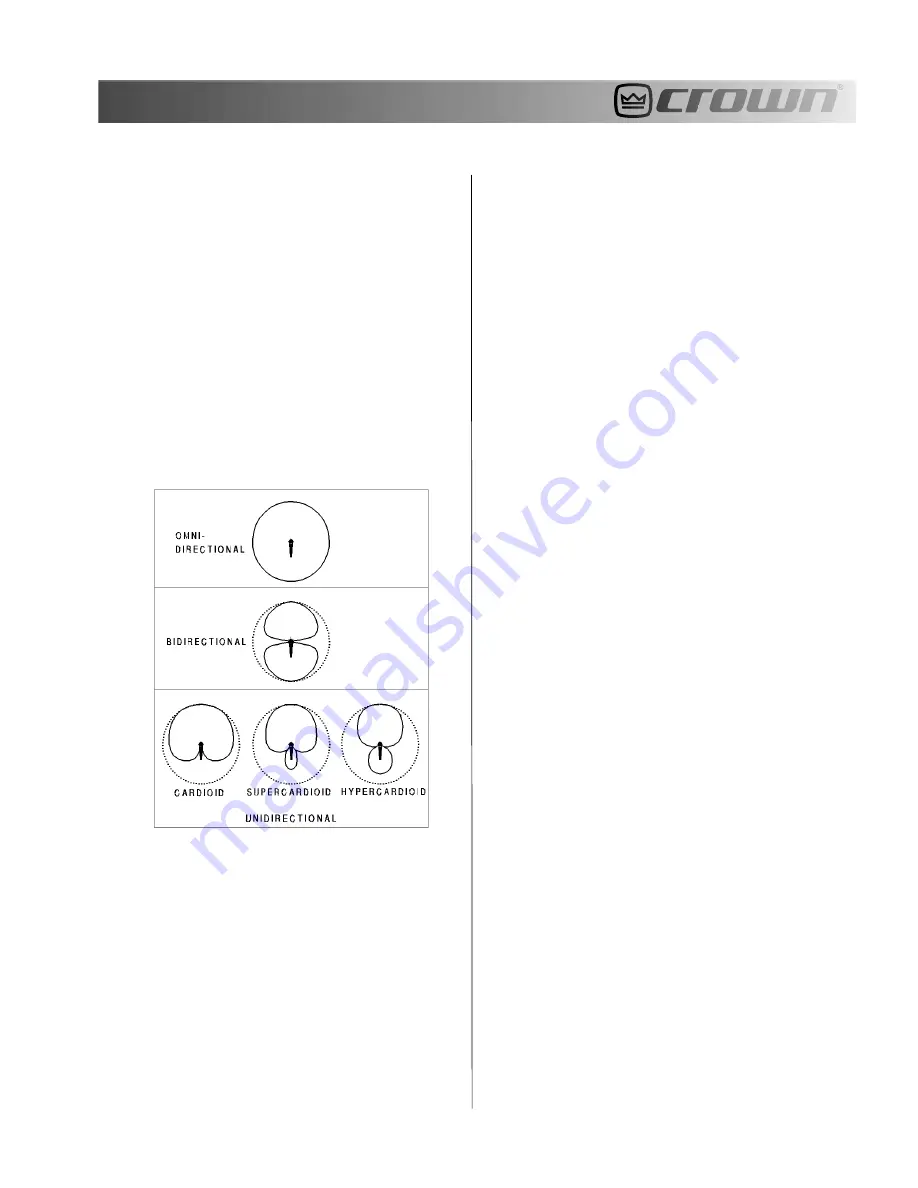
3
Currently, all Crown microphones are the electret
condenser type — a design of proven reliability and
studio quality.
POLAR PATTERNS
Microphones also differ in the way they respond to
sounds coming from different directions. The sen-
sitivity of a microphone might be different for
sounds arriving from different angles. A plot of mi-
crophone sensitivity verses the angle of sound in-
cidence is called its
polar pattern
. Several polar
patterns are shown in Figure 3.
Fig. 3 – Polar patterns.
An
omnidirectional
(omni) microphone is equally
sensitive to sounds coming from all directions. A
unidirectiona
l microphone is most sensitive to
sounds coming from one direction — in front of
the microphone. A
bidirectional
(figure-eight)
microphone is most sensitive in two directions:
front and rear.
An omni microphone is also called a
pressure mi-
crophone
; a uni- or bi-directional microphone is
also called a
pressure-gradient microphone
.
Three types of unidirectional patterns are the car-
dioid, supercardioid, and hypercardioid pattern. The
cardioid
pattern has a broad pickup area in front of
the microphone. Sounds approaching the side of
the mic are rejected by 6 dB; sounds from the rear
(180 degrees off-axis) are rejected 20 to 30 dB. The
supercardioid
rejects side sounds by 8.7 dB, and
rejects sound best at two “nulls” behind the micro-
phone, 125 degrees off-axis.
The
hypercardioid
pattern is the narrowest pattern
of the three (12 dB down at the sides), and rejects
sound best at two nulls 110 degrees off-axis. This
pattern has the best rejection of room acoustics,
and provides the most gain-before-feedback from
the main sound reinforcement speakers.
Choose an omnidirectional mic when you need:
All-around pickup
Best pickup of room acoustics (ambience or
reverb)
Extended low-frequency response
Low handling noise
Low wind noise
No up-close bass boost
Choose a unidirectional mic when you need:
Selective pickup
Rejection of sounds behind the microphone
Rejection of room acoustics and leakage
More gain-before-feedback
Up-close bass boost
An omnidirectional boundary microphone (such as
a PZM) has a half-omni or hemispherical polar pat-
tern. A unidirectional boundary microphone (such
as a PCC-160 or PCC-170) has a half-supercardioid
polar pattern. The boundary mounting increases the
directionality of the microphone, thus reducing
pickup of room acoustics.

































